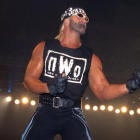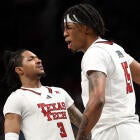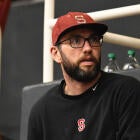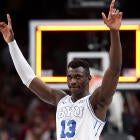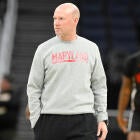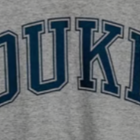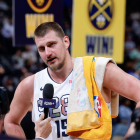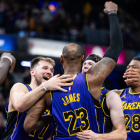"You fans can stick it, brother." -- Hulk Hogan, July 7, 1996
Twenty years ago in Daytona Beach, Florida, pro wrestling's most famous good guy and its most lucrative draw turned to the dark side. In the campy world of sports entertainment, it stands as arguably the greatest heel turn of all time. When the aging, increasingly stale Hulk Hogan ditched his threadbare superhero act to become a conniving, cowardly villain, the wrestling business regained its ambition. For the most part, it hasn't looked back.
In the main event of WCW's Bash at the Beach pay-per-view, Scott Hall and Kevin Nash -- recently hired away from the then-WWF -- showed up a man short for their main event vs. the babyface team of Lex Luger, Sting and Randy "Macho Man" Savage. They assured the audience their unnamed third man was in the building and began the match without him.
With Luger carried away from the ring on a stretcher and both Sting and Savage down, Hall and Nash appeared to have the match under control. Then Hogan arrived, just like he had a thousand times before, decked out in red and yellow, ready to save the day and destroy the heels.
Except this time, he didn't.
A stunned crowd looked on as Hogan attacked Savage while he was down. Hogan covered his old on-again, off-again pal for a symbolic three count. The live audience quickly became unruly, throwing full drinks and other trash into the ring while the smug trio of Hogan, Hall and Nash mocked and instigated them. Fifteen years of Hogan's legendary good-guy shtick -- from Hulkamania to bodyslamming Andre the Giant to starring in Saturday morning cartoons -- ended with Hogan comparing his WCW fans to the very trash they now threw at his do-ragged head.
As security guards surrounded the ring to prevent angry onlookers from making poor decisions, play-by-play man Tony Schiavone signed off the PPV broadcast with a dejected, "Hulk Hogan, you can go to hell."
Led by Eric Bischoff, WCW had been making a serious play to unseat the WWF as the No. 1 wrestling organization in North America for years leading up to that moment. It began with the signing away of big-name, WWF-branded stars like Hogan, Savage, "Mean" Gene Okerlund and Bobby "The Brain" Heenan. In September 1995, WCW launched Monday Nitro, a weekly live show on TNT that directly opposed WWF's Monday Night Raw on USA Network.
In the spring of 1996, Bischoff signed Hall (known in WWF as Razor Ramon) and Nash (Diesel) to big-money, guaranteed contracts. To maximize the impact of their arrival in WCW, Bischoff borrowed the storyline idea of an "outsider" invasion that he'd seen in Japan. Hall and Nash would be scripted as heel invaders from the WWF, here to prove their dominance and "take over" on behalf of their home territory. After the dust settled from Hall and Nash crashing WCW's party, the storyline's appeal would largely hinge on the speculation about who else might be joining this renegade faction, eventually known as the New World Order (nWo).
The speculation started with that mysterious "third man" to be revealed at Bash at the Beach. WCW's recent success at signing away top WWF talent meant Vince McMahon's entire roster became the subject, at one time or another, of rumors that they might show up in WCW. In reality, Luger was reportedly the first guy considered to be the third man, but that move simply wouldn't have been enough of a shock.
Bischoff talked Hogan into turning heel several days before the PPV, but since Hogan had creative control written into his contract, Bischoff knew Hogan could change his mind at any time. Just in case Hogan got cold feet about the heel turn, reports at the time were that Sting -- another longtime babyface -- was Bischoff's "Plan B" to turn heel on his partners and join Hall and Nash. As is turned out, Plan B was not necessary.

The risk involved in a Hulk Hogan heel turn was substantial. For 15 years, Hogan was a profit-generating machine. His character helped drive TV deals, merchandise sales and PPV buys. If not handled properly, Hogan's heel turn could have had an immediate negative impact on WCW's bottom line. Thanks to the charisma of Hall and Nash, the intrigue of the early nWo storyline and the novelty of seeing Hogan play heel, the opposite happened. The nWo became cool and its merchandise flew off shelves. Some would say Hogan made a shrewd decision to hitch his aging wagon to the younger, fresher act of The Outsiders. The fact is this: The move could have just as easily backfired.
At the time Hogan turned heel, Nitro aired live for two hours every Monday night. WWF's Monday Night Raw was live once every three weeks and aired pre-recorded shows the rest of the time. The night after Hogan's heel turn, in competition with a live Nitro following up on the greatest heel turn in modern wrestling history, the WWF (now WWE) happened to be airing two-week-old, pre-recorded matches on Raw. Adding insult to injury, the star of that night's pre-recorded Raw episode was the Ultimate Warrior, who had just gotten himself suspended for failure to appear for advertised events. All this was happening while three big names from the WWE's recent past were on another channel making history.
The success of Hogan's heel turn and the subsequent nWo angle forced WWE to get creative and churn out new stars, never knowing for sure if the existing ones would leave for a big-money WCW deal. Soon, WWE became the promotion where a talented worker could get an opportunity to shine without being in the shadow of a Hogan or a Savage. From this environment emerged people like "Stone Cold" Steve Austin, The Rock and Mick Foley.
WCW's success also forced WWE to air live more often, experiment with new storyline ideas and upgrade the presentation of its own product. The "Attitude Era" was, in large part, WWE's attempt to be seen as the more hip and edgy of the two shows. Until Hall and Nash arrived in WCW and Hogan reinvented himself as a heel, nobody had ever worried about WCW being perceived as hip, especially in a general pop culture sense.
Would the future of pro wrestling have looked the same if Sting had joined Hall and Nash that night and Hogan never turned heel? Perhaps. Hogan certainly didn't change the world, and he definitely had less to do with it than his nWo stable-mates did. You could even argue Hogan was just adapting to a change that was coming either way, with or without him, and bought himself a few more years of relevance by taking a risk.
But in giving fans the symbolic end of one era of wrestling and the beginning of another, Hogan's nWo heel turn remains a major highlight of wrestling history two decades later and a turning point in the late 1990s and early 2000s wrestling explosion.
Seems like yesterday nWo was formed 20yrs ago,20 more years from now I wonder where I will be,every day is a gift,only love to all maniacsHH
— Hulk Hogan (@HulkHogan) July 7, 2016
![[object Object] Logo](https://sportshub.cbsistatic.com/i/2020/04/22/e9ceb731-8b3f-4c60-98fe-090ab66a2997/screen-shot-2020-04-22-at-11-04-56-am.png)






